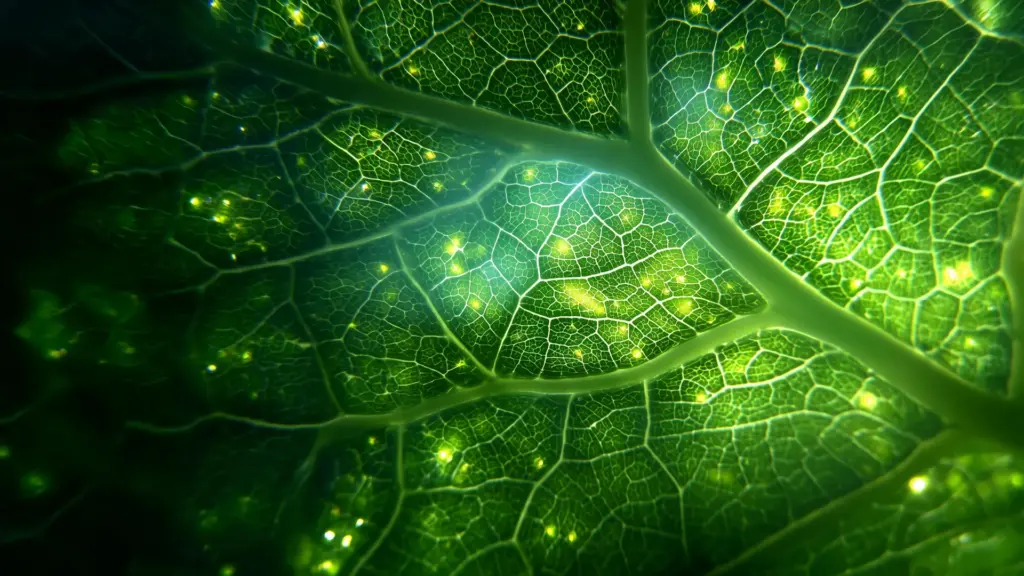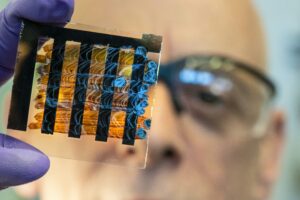
In a groundbreaking study, researchers have finally solved a decades-old mystery in photosynthesis, revealing why electron movements crucial for energy transfer occur through only one side of a key protein-pigment structure. The findings, published in the Proceedings of the National Academy of Sciences, could pave the way for advancements in artificial photosynthetic systems.
Photosynthesis, a complex sequence of reactions where electrons pass between multiple pigment molecules, has long puzzled scientists due to its intricate components and rapid timescales. Understanding these processes more deeply could lead to the development of efficient synthetic systems, like artificial leaves and solar-based fuel technologies, that mimic nature’s design.
Understanding Photosystem II
At the heart of photosynthesis in most life forms is a protein-pigment complex known as Photosystem II (PSII). This complex captures sunlight, splits water molecules, releases oxygen, and sends electrons onward in the energy transfer chain. PSII features two nearly identical branches, D1 and D2, surrounded by chlorophyll molecules and pigments called pheophytins, which are symmetrically arranged and connected to electron carriers known as plastoquinones.
Despite the structural symmetry, experiments have consistently shown that electrons move only through the D1 branch. “Despite the structural symmetry between the D1 and D2 protein branches in PSII, only the D1 branch is functionally active,” explains Aditya Kumar Mandal, the study’s first author and a PhD student in the Department of Physics at IISc.
Investigating the Electron Flow Imbalance
To explore this imbalance, the research team employed molecular dynamics simulations, quantum mechanical analyses, and Marcus theory—a Nobel Prize-winning model describing electron transfer. “We assessed the electron transfer efficiency step-by-step through both D1 and D2 branches,” says Shubham Basera, another PhD student and co-author.
The study revealed that the D2 branch has a significantly higher energy barrier, making electron transport energetically unfavorable. Specifically, the transfer of electrons from pheophytin to plastoquinone in D2 requires twice the activation energy needed in D1, creating a barrier that electrons cannot overcome.
“The resistance against electron movement in D2 was two orders of magnitude higher than in D1,” the researchers noted in their simulations of current-voltage characteristics.
Implications for Artificial Photosynthesis
The asymmetry in electron flow may also be influenced by subtle differences in the protein environment around PSII and how pigments are embedded. For instance, the chlorophyll pigment in D1 has a lower energy excitation state than its D2 counterpart, suggesting a better capacity for attracting and transferring electrons.
Researchers propose that tweaking these components could enhance or rewire electron flow across PSII. Swapping chlorophyll and pheophytin in D2 might overcome the electron block, as chlorophyll requires less activation energy than pheophytin.
“Our research presents a significant step forward in understanding natural photosynthesis,” says Prabal K Maiti, Professor at the Department of Physics and one of the corresponding authors. “These findings may help design efficient artificial photosynthetic systems capable of converting solar energy into chemical fuels, contributing to innovative and sustainable renewable energy solutions.”
The Road Ahead
This discovery not only advances our understanding of photosynthesis but also opens new avenues for research in renewable energy. Bill Goddard, Professor at Caltech and a corresponding author, describes the study as “a beautiful combination of theory at various levels to address a long-standing problem culminating in a new level of understanding, but still leaving mysteries to be challenged.”
As scientists continue to explore the intricacies of photosynthesis, these findings could lead to breakthroughs in how we harness solar energy, potentially transforming the landscape of renewable energy technologies.







